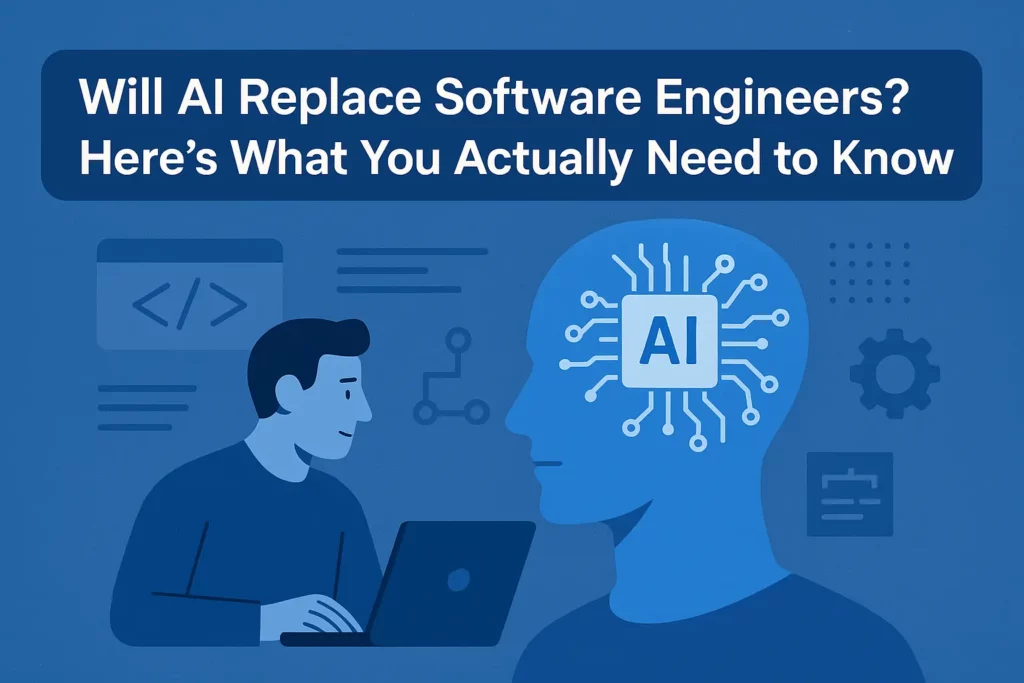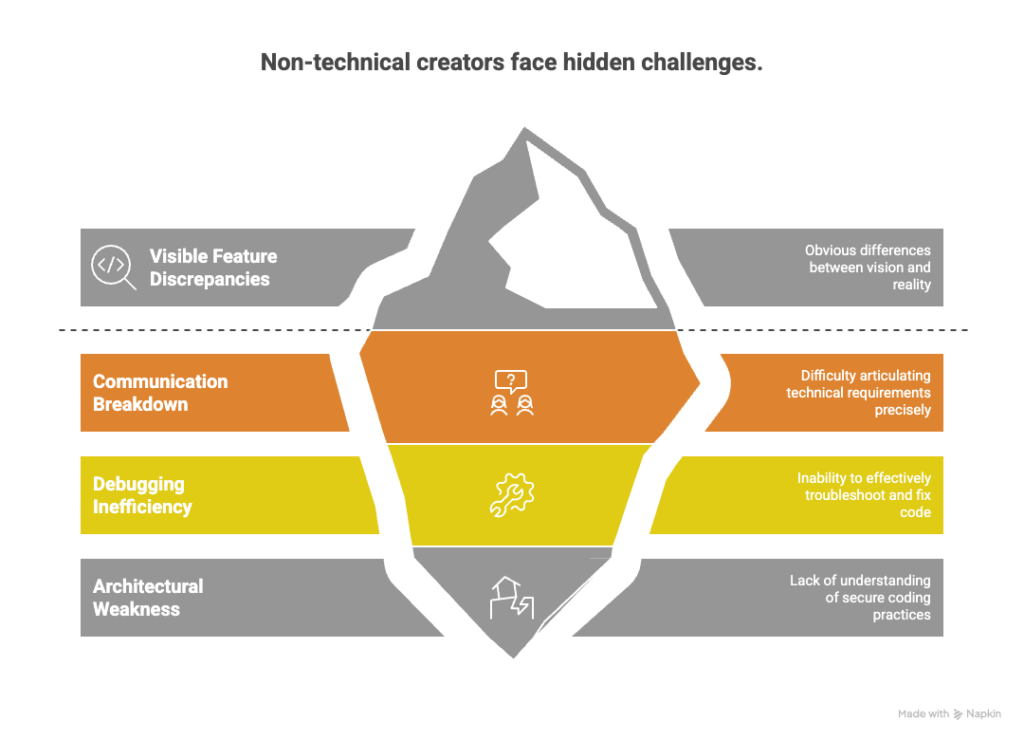Why AI Makes Algorithmic Thinking More Valuable Than Ever

Last week, I watched a junior developer use Claude to build an entire React component in under 10 minutes. The component looked perfect—clean JSX, proper state management, even accessibility attributes. But when I asked him to optimize it for performance or handle edge cases, he stared at the screen blankly.
That moment crystallized something I’ve been thinking about for months: AI isn’t replacing developers, but it’s fundamentally changing what it means to be one.
Table of Contents
- The Reality Check: What AI Actually Does
- Where AI Hits Its Ceiling
- The New Meta-Skills: Thinking Models & Context Engineering
- The Skill That Makes You Irreplaceable
- Working WITH AI: The Partnership Model
- Real-World Case Study: Building Hickery.net
- Your 90-Day Transformation Plan
The Reality Check: What AI Actually Does
Let’s be brutally honest: AI tools have evolved beyond simple code completion into sophisticated development partners that can handle entire workflows:
Full-stack code generation: Modern AI doesn’t just autocomplete—it architects complete features from database schemas to frontend components, often producing production-ready code that would take experienced developers hours to write.
Intelligent debugging: AI now performs root cause analysis, tracing bugs through complex call stacks and suggesting fixes that address underlying issues rather than just symptoms. It can spot race conditions, memory leaks, and security vulnerabilities that escape human review.
Context-aware refactoring: AI understands your entire codebase, suggesting architectural improvements and modernizing legacy code while maintaining compatibility. It can transform outdated patterns into current best practices across thousands of files simultaneously.
Comprehensive documentation: AI generates not just comments and READMEs, but architectural decision records, API specifications, and user guides that maintain consistency with your actual implementation—automatically updating when code changes.
Many teams report 5-10× productivity gains in specific workflows when they integrate these tools strategically. But here’s the crucial insight: this acceleration amplifies both good and bad engineering decisions exponentially.
“AI is like having a brilliant senior developer who can implement anything you can describe clearly, but has zero judgment about whether you should build it in the first place.”
Where AI Hits Its Ceiling
AI excels at patterns it’s seen in training data, but struggles with what I call “the thinking parts”:
1. Problem Decomposition
AI can list generic system components, but it can’t tailor a design to your specific latency targets, budget constraints, or team expertise. It doesn’t know that your database already struggles with complex queries or that your team has limited React experience.
2. Algorithm Selection
AI often returns the simplest working solution. A skilled engineer recognizes when it’s insufficient and knows how to prompt for improvements.

Example: The Performance Trap
// AI's first suggestion: works but doesn't scale (O(n) time)
function findUser(users, id) {
return users.find(u => u.id === id);
}Why this matters: This implementation works perfectly for 100 users but becomes a bottleneck with 100,000. A human engineer spots this scaling issue and asks the right follow-up questions.
// Optimized approach: constant-time lookups (O(1) average)
class UserManager {
constructor(users) {
this.userMap = new Map(users.map(u => [u.id, u]));
}
findUser(id) {
return this.userMap.get(id);
}
}The trade-off: Extra memory and initial build cost, but vastly faster queries. This is the kind of engineering judgment AI lacks.
Pro tip: After receiving AI’s basic solution, always ask:
- “What’s the time complexity?”
- “How will this scale with 1M records?”
- “Can you suggest a data structure for O(1) lookups?”
3. System Design Decisions
Consistency vs. availability? Microservices vs. monolith? AI suggests patterns from its training data; humans decide which patterns fit specific business needs and constraints.
4. Debugging Complex Issues
Race conditions, memory leaks under load, data corruption—these emerge from subtle timing and infrastructure interactions that AI cannot observe or reproduce.
The New Meta-Skills: Thinking Models & Context Engineering
To extract maximum value from AI, you need to master two critical meta-skills:
Strategic Prompting Architecture
While modern AI models reason internally, the real skill lies in designing multi-step conversations that build complex solutions incrementally:
Progressive refinement: Start with high-level requirements, then iteratively add constraints, edge cases, and optimization criteria. This prevents the AI from making assumptions about unstated requirements.
Constraint-driven development: Rather than asking for “a user authentication system,” specify: “a JWT-based auth system that supports role-based access control, handles token refresh seamlessly, and integrates with our existing PostgreSQL user table.”
Context switching mastery: Know when to start fresh conversations versus when to continue building on existing context. Each approach has distinct advantages for different types of problems.
Context Engineering
Prompt templates: Create standardized prompts like “You are a senior React engineer focused on performance and accessibility…”
System vs. user messages: Use strong system prompts to establish expertise level and coding standards
Strategic chunking: Feed only relevant code snippets to stay within context limits while maintaining coherence
Iterative context building: Layer information strategically—start with architecture, add business logic, then optimize for specific constraints.
Master these techniques, and AI transforms from a code generator into a collaborative thinking partner that can tackle enterprise-level complexity.
The Skill That Makes You Irreplaceable
Algorithmic thinking isn’t about memorizing sorting algorithms—it’s about developing a systematic approach to problem-solving:
Pattern recognition: Spotting that your recommendation system is actually a graph traversal problem in disguise
Decomposition: Breaking complex features into independent, testable components
Constraint analysis: Defining “fast enough” and “good enough” for your specific use case
Trade-off evaluation: Balancing performance, maintainability, and development velocity
Case Study: E-commerce Search Evolution
AI’s naive approach (adequate for small datasets):
function searchProducts(products, query) {
return products.filter(product =>
product.name.toLowerCase().includes(query.toLowerCase())
);
}Why it fails at scale: O(n) scan through every product, no multi-word support, no ranking.
Algorithmic approach with inverted index:
class ProductSearchIndex {
constructor(products) {
this.index = new Map();
this.products = products;
// Build inverted index: word → set of product IDs
products.forEach((product, id) => {
const words = product.name.toLowerCase().split(/\s+/);
words.forEach(word => {
if (!this.index.has(word)) {
this.index.set(word, new Set());
}
this.index.get(word).add(id);
});
});
}
search(query) {
const queryWords = query.toLowerCase().split(/\s+/);
const matchingSets = queryWords.map(word =>
this.index.get(word) || new Set()
);
// Find intersection of all matching sets
const results = matchingSets.reduce((acc, set) =>
new Set([...acc].filter(id => set.has(id)))
);
return [...results].map(id => this.products[id]);
}
}The transformation: Near-constant time per query term, supports multi-word searches, easily extensible for ranking algorithms and fuzzy matching.
Working WITH AI: The Partnership Model
The future is amplification, not replacement. Here’s how to structure the collaboration:
Delegate to AI:
- Routine boilerplate and repetitive code
- Comprehensive test suite generation
- Syntax error fixes and code formatting
- Initial documentation drafts
Reserve for humans:
- High-level architecture decisions
- Performance optimization strategies
- Business requirement translation
- Complex debugging and root cause analysis
My Proven Workflow:
- Strategic thinking: Map out edge cases, data flows, and constraints
- High-level design: Define modules, interfaces, and dependencies
- AI implementation: Generate code with guided, specific prompts
- Critical review: Optimize, secure, and refactor the output
- Edge-case testing: Write tests AI might miss
Real-World Case Study: Building Hickery.net
When building Hickery, an AI music playlist generator with YouTube integration, I experienced firsthand the gap between technical and non-technical approaches to AI-assisted development.
After experimenting with O3-mini, Gemini 2, Deepseek, and Qwen, Claude 3.7 Sonnet proved superior for what I call “vibe coding”—translating creative vision into functional code. I also tested Bolt.new and Lovable, but found them frustrating for debugging. These tools often fixed specific issues while creating new ones, leading to endless problem-solving loops that pulled me away from my original vision.
The Three Critical Gaps I Observed:
1. Vision Translation Barrier
Non-technical creators struggle to articulate exactly how they want features to work. Where I can provide specific technical parameters (“implement debounced search with 300ms delay”), they must rely on metaphors and examples, often settling for approximations rather than precise implementations.
2. Debugging Paralysis
When something breaks, non-technical creators face a painful choice: attempt to fix code they don’t understand, or request complete feature rebuilds. Both paths frequently lead away from their original vision, creating a frustrating cycle of compromise.
3. Foundation Fragility
Without knowledge of architecture and security practices, non-technical creators unknowingly build on problematic foundations. What starts as a working prototype becomes increasingly brittle as features are added, creating technical debt that even AI struggles to resolve.
The lesson: Technical knowledge isn’t just about writing code—it’s about making informed decisions that compound positively over time.

Your 90-Day Transformation Plan
Week 1-2: Foundation Assessment
- Solve one algorithmic puzzle daily on LeetCode or HackerRank
- For every AI-generated code snippet, ask: “What are the performance trade-offs?” and “How could this be improved?”
- Start a decision journal documenting your technical choices and reasoning
Month 1: Pattern Recognition
- Master one data structure deeply (I recommend starting with hash maps)
- Build a small project requiring algorithmic thinking (URL shortener, cache system, or basic search engine)
- Practice explaining your design decisions to others—teaching clarifies thinking
Month 2: Context Engineering Mastery
- Develop your personal prompt library for common coding tasks
- Experiment with different AI models and compare their outputs
- Focus on one complex system design problem per week
Month 3: Integration and Leadership
- Lead a code review session focused on algorithmic choices
- Mentor a junior developer—solidifying your own understanding
- Contribute to an open-source project that interests you
Why I Built AlgoCademy
The panic about AI replacing developers misses the fundamental point: the skills that make you irreplaceable are entirely learnable.
AlgoCademy bridges this gap through interactive tutorials that teach you why algorithms work, not just how to code them. Our AI-guided learning develops the problem-solving intuition that makes you irreplaceable in an AI-driven world.
The Bottom Line
AI will transform software engineering, but it won’t replace engineers who can:
- Decompose complex problems into manageable, well-architected solutions
- Select optimal algorithms based on real-world constraints and trade-offs
- Design systems that scale gracefully and adapt to changing requirements
- Guide AI effectively through sophisticated prompting and context management
The future belongs to developers who think beyond code—who understand the business context, performance implications, and long-term consequences of every technical decision.
The question isn’t whether AI will change your job. The question is whether you’ll be ready to thrive in that change.
What’s your experience with AI coding tools? Where do they excel, and where do they consistently fall short? Share your thoughts in the comments—I’d love to hear about your real-world experiences.
Tags: #ai #softwaredevelopment #algorithms #programming #career #webdev #futureofwork #contextengineering

